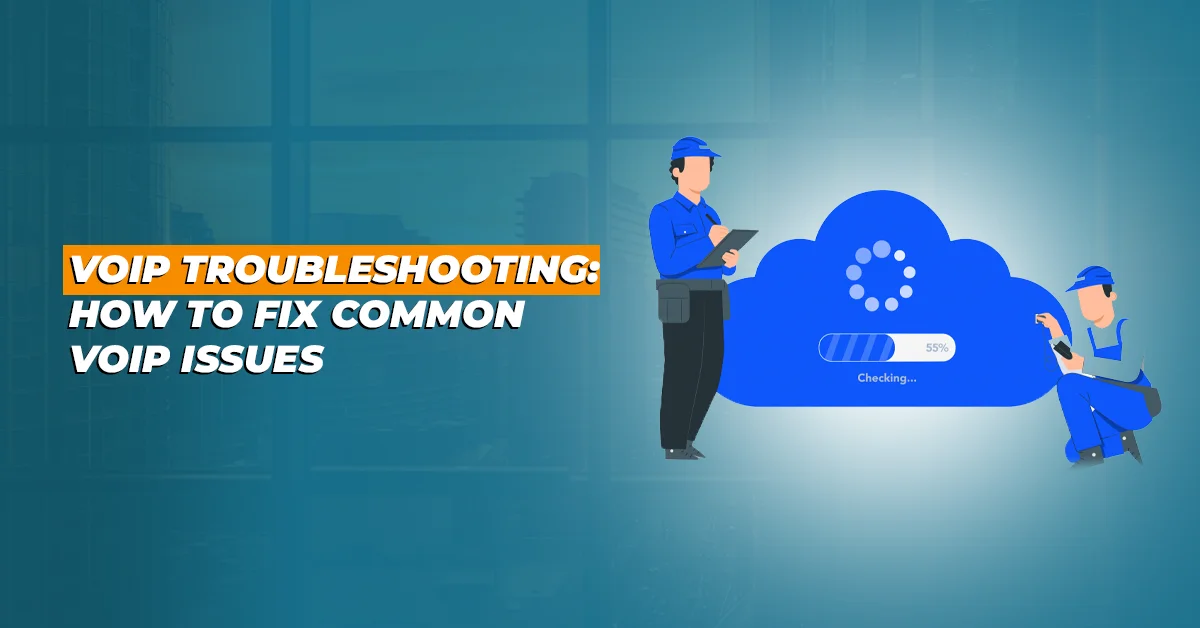VoIP System has revolutionized communication systems. It has become indispensable for modern business. Cloud based phone systems have surpassed traditional phone systems in flexibility, scalability, cost-effectiveness, and remote accessibility.
Despite its advanced features and many benefits, the system is not immune to efficiency like any other technology, Poor call quality, and call dropping are some common VoIP issues.
However, the beauty of VoIP lies in its adaptability and the empowerment it provides users to resolve common issues independently.
You don’t need to go to the customer care service every time you face any issue. Rather you can solve these problems by yourself.
In this article, we will delve into common VoIP issues and provide practical solutions for troubleshooting them.
Understanding VoIP Issues
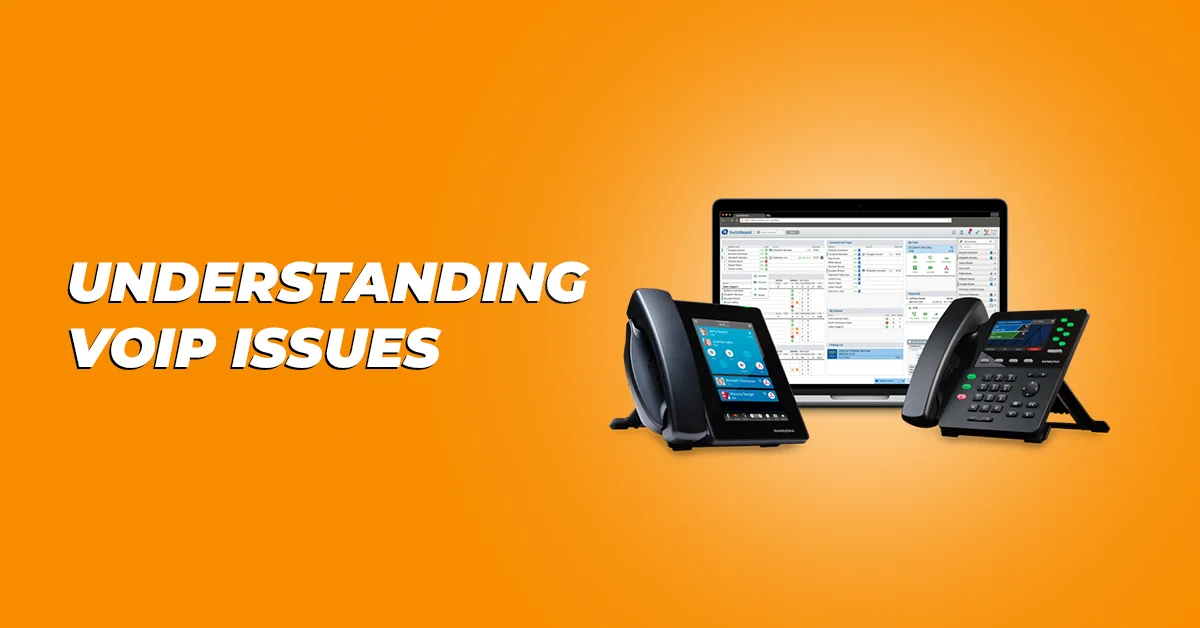
For the modern business owner, navigating the realm of Voice over Internet Protocol (VoIP) brings forth a multitude of benefits, but also introduces its own set of challenges. VoIP, while offering unparalleled flexibility and scalability, is susceptible to various issues that can disrupt communication flow and hinder productivity.
From poor audio quality to unexpected call drops, these issues can arise due to a myriad of factors, including network congestion, hardware limitations, and security vulnerabilities. Understanding the intricacies of VoIP issues is paramount for business owners seeking to leverage this technology to its fullest potential.
By recognizing common pitfalls and their underlying causes, they can proactively address these challenges and ensure a seamless communication experience for themselves and their teams.
In the following sections, we will delve deeper into these issues and equip business owners with the knowledge and tools needed to do VoIP troubleshooting effectively, empowering them to harness the full power of VoIP phone systems for their business endeavors.
Network-related Issues and Solutions
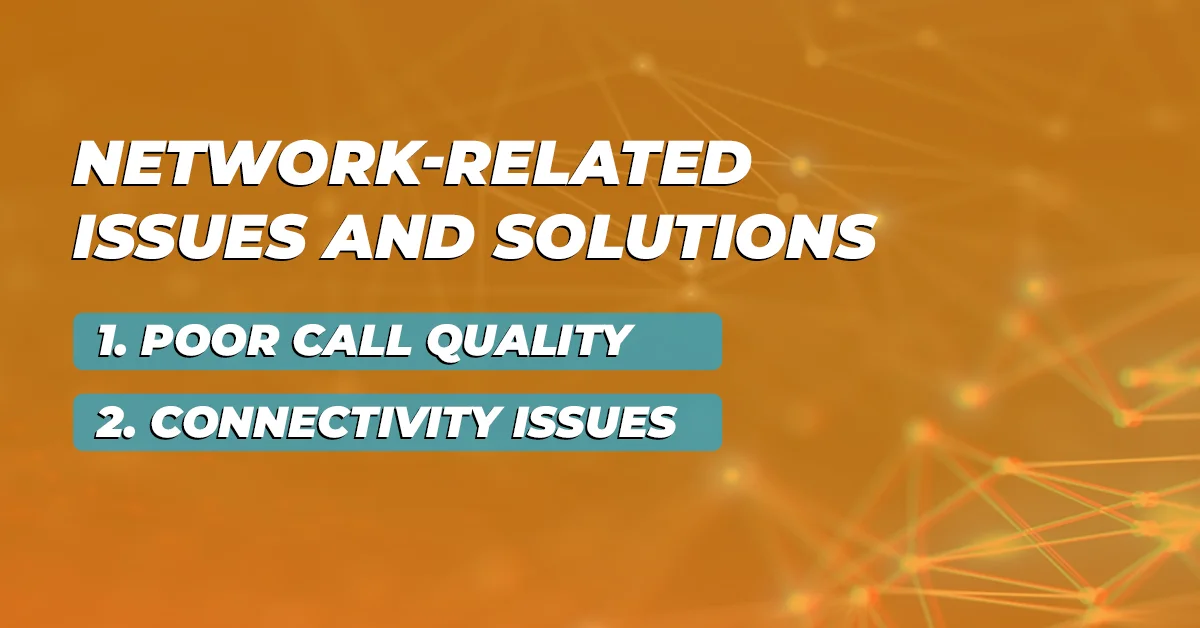
In the realm of Voice over Internet Protocol (VoIP), network-related challenges often rear their head, causing frustration and disruptions in communication. Two common culprits in this domain are poor call quality and connectivity issues. For a smooth communication process, business owners need to know the VoIP Troubleshooting to solve these VoIP problems.
-
Poor Call Quality
Few things that you cannot avoid in professional communication as poor call quality. Business owners can sometimes experience VoIP call quality as choppy audio, delays, or inconsistent sound quality.
This will affect the credibility and efficiency of a business. Often VoIP devices can go through this issue due to network congestion, insufficient bandwidth, or improperly configured Quality of Service (QoS) settings.
By prioritizing VoIP traffic and optimizing network resources, businesses can mitigate these issues and enhance call quality significantly. Additionally, ensuring the use of high-quality equipment, such as reliable headsets and robust routers, can further contribute to a seamless communication experience.
-
Connectivity Issues
In an increasingly interconnected world, maintaining consistent connectivity is paramount for business success. However, connectivity issues, such as dropped calls or intermittent signal loss, can disrupt workflows and erode confidence in VoIP systems.
These issues may arise from router malfunctions, signal interference, or slow internet speed. To combat connectivity challenges, business owners can implement VoIP troubleshooting such as router restarts, firmware updates, and strategic placement of networking equipment to optimize signal strength and stability.
Additionally, leveraging dual-band routers and exploring alternative internet service providers can offer viable solutions for enhancing connectivity and minimizing downtime.
By addressing network-related VOIP problems and solutions, business owners can safeguard the integrity of their VoIP communication infrastructure and unlock the full potential of this transformative technology.
Hardware and Software Issues
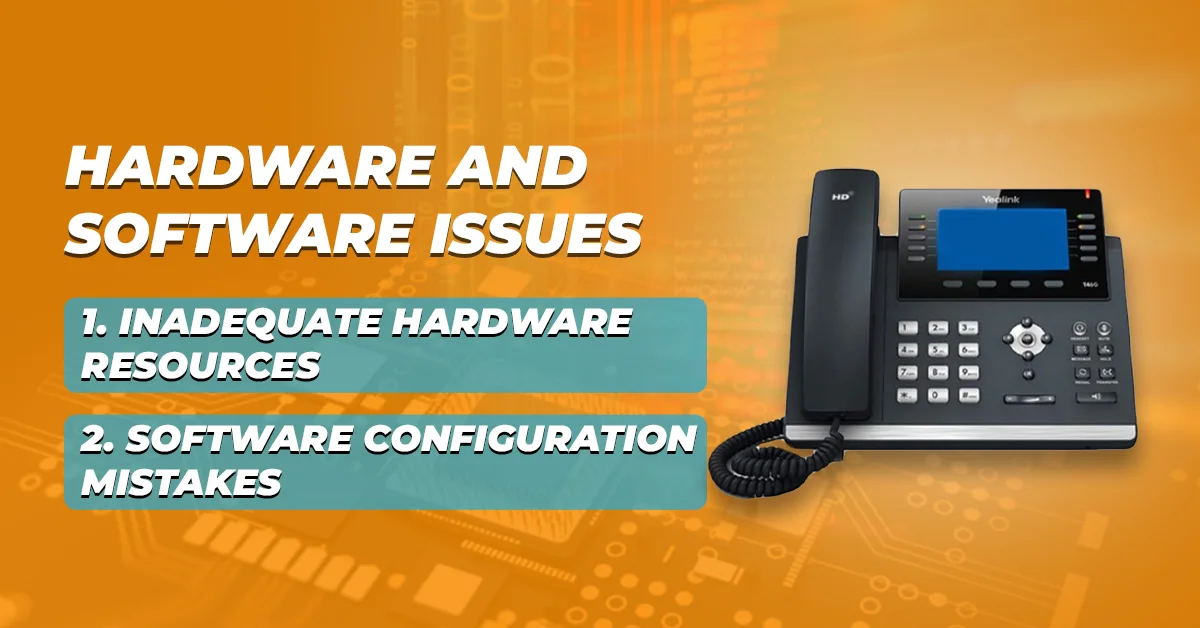
In the dynamic landscape of VoIP communication, hardware and software play pivotal roles in ensuring seamless operation. However, inadequacies in hardware resources and configuration mistakes can manifest as significant hurdles for businesses striving for uninterrupted connectivity and productivity.
-
Inadequate Hardware Resources
The efficiency of a VoIP system depends on the quality and capability of its hardware components. Inadequate hardware resources, such as outdated routers, insufficient bandwidth, or incompatible devices, can impact the performance of VoIP applications and compromise call quality.
For business owners knowing the VOIP troubleshooting strategies for such issues, is paramount. Upgrading routers to accommodate higher data throughput, deploying Quality of Service (QoS) mechanisms to prioritize VoIP traffic, and ensuring compatibility with VoIP-enabled devices can all contribute to a smoother and more reliable communication experience.
-
Software Configuration Mistakes
Software configuration serves as the backbone of VoIP functionality, dictating parameters such as call routing, codec selection, and security protocols. However, configuration mistakes can introduce vulnerabilities or hinder the optimal performance of VoIP systems and cause VOIP devices to not work properly.
Common misconfigurations may include incorrect codec settings, firewall restrictions blocking VoIP traffic, or misaligned network settings. VoIP troubleshooting strategies for resolving this issue are conducting thorough audits of VoIP software configurations, and ensuring alignment with best practices and vendor recommendations.
Additionally, regular software updates and patches can address known vulnerabilities and optimize system performance, safeguarding against potential disruptions in communication flow.
Security Concerns in VoIP
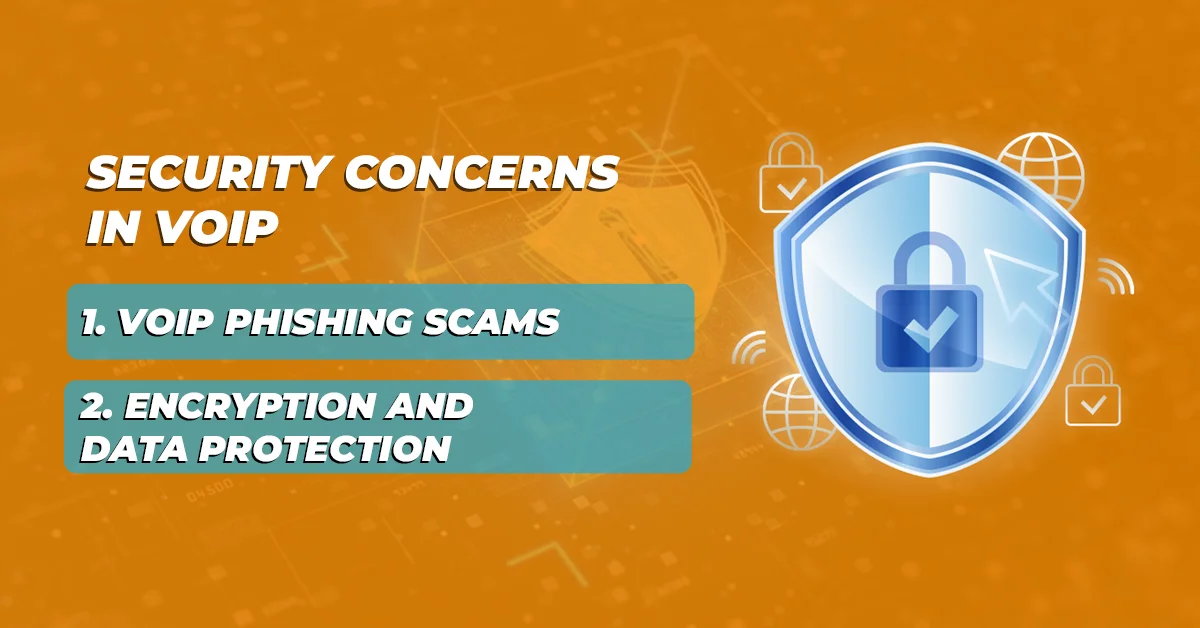
As businesses increasingly rely on Voice over Internet Protocol (VoIP) for their communication needs, ensuring robust security measures is necessary to safeguard sensitive data and protect against emerging threats. Two significant security concerns in the realm of VoIP are phishing scams and encryption/data protection vulnerabilities.
-
VoIP Phishing Scams
Phishing scams are a threat to businesses utilizing VoIP technology. It uses deceptive tactics to manipulate users into disclosing sensitive information or initiating unauthorized transactions. These scams may start as fraudulent calls or messages impersonating legitimate entities.
These scammers influence users to disclose their login credentials, financial details, or other confidential information. To reduce the risk of falling victim to VoIP phishing scams, businesses should prioritize employee education and awareness programs, emphasizing the importance of vigilance and skepticism when encountering unfamiliar or suspicious communications.
Additionally, implementing robust authentication mechanisms, such as multi-factor authentication (MFA) and call verification protocols, can serve as effective deterrents against phishing attempts, bolstering the overall security posture of the VoIP infrastructure.
-
Encryption and Data Protection
In an era marked by heightened concerns over data privacy and regulatory compliance, encryption and data protection mechanisms play a vital role in safeguarding sensitive information transmitted via VoIP channels.
Encryption protocols, such as Secure Real-time Transport Protocol (SRTP) and Transport Layer Security (TLS), provide end-to-end encryption of voice data, rendering it unintelligible to unauthorized entities and thwarting potential eavesdropping attempts.
Furthermore, robust access controls, network segmentation, and regular security audits can fortify VoIP systems against unauthorized access and data breaches, ensuring compliance with stringent data protection regulations and instilling confidence in clients and stakeholders regarding the integrity and confidentiality of their communications.
Advanced Troubleshooting Techniques

Navigating through complex VoIP issues may require advanced VOIP troubleshooting techniques to identify and resolve underlying problems efficiently.
- Packet Sniffing: Analyze network traffic to pinpoint potential bottlenecks and diagnose latency issues.
- Quality of Service (QoS) Optimization: Prioritize VoIP traffic over other data streams to ensure consistent call quality and minimize disruptions.
- Bandwidth Monitoring: Monitor bandwidth usage in real time to identify spikes or congestion that may affect VoIP performance.
- Firewall Configuration: Review and adjust firewall settings to allow VoIP traffic while maintaining network security.
- Codec Selection: Experiment with different codecs to optimize voice quality and bandwidth utilization based on network conditions.
- Router Configuration: Fine-tune router settings such as UDP timeout intervals and SIP ALG settings to optimize VoIP performance.
- VoIP Protocol Analysis: Use specialized tools to analyze VoIP protocol packets and diagnose protocol-specific issues.
- Echo Cancellation: Implement echo cancellation algorithms to mitigate echo-related issues and enhance call clarity.
- Call Detail Record (CDR) Analysis: Review CDR logs to identify patterns or anomalies in call behavior that may indicate underlying issues.
- Remote Diagnostics: Utilize remote diagnostic tools to troubleshoot VoIP issues without the need for onsite intervention.
When to Contact Your VoIP Provider
If troubleshooting efforts fail to resolve VoIP issues or if they persist despite corrective actions, it’s time to enlist the support of your VoIP provider. They have the expertise and resources to diagnose and resolve underlying problems promptly. VoIPElements is your best place to call for any VoIP-related problems.
Wrapping Up
In the ever-evolving landscape of modern business communication, Voice over Internet Protocol (VoIP) has emerged as a cornerstone of efficiency and connectivity. Despite its transformative capabilities and myriad benefits, VoIP systems are not immune to challenges.
From network-related issues to hardware and software discrepancies, and from security concerns to advanced troubleshooting requirements, navigating the complexities of VoIP technology demands vigilance and expertise. Business owners need to know the troubleshooting techniques for a seamless operation.

